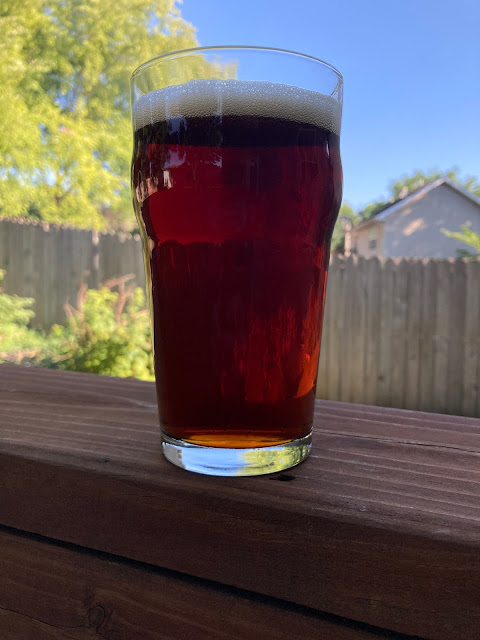Those hops were put into beer three this spring, immediately following the mild and fermented with the same yeast cake. One thing I noticed upon removing them from the vacuum sealed package in the freezer was that they were ever so slightly damp, indicating they weren't completely dry when I packaged them. I'm not sure that had any effect on the finished beer.
It might have, though, or it might just be because these are homegrown hops, but anyhow the finished beer didn't seem to have grapefruit or citrus flavors. People in my homebrew club described it as piney, and I think I would agree, or earthy.
The beer was excellently balanced between malt sweetness, bitterness, and hop flavor, so I was very pleased with that. A problem I often have with brewing is achieving balance. But this one worked out well.
Sadly this year's crop achieved peak growth in late June or July, right when we were in the thick of a terrible drought along with 100 degree heat. The plants began to look sickly and the cones turned brown. The lupulin powder in the cones still smells good, but the cones themselves definitely are not visually attractive and I'd be hesitant to try them in a beer.

.JPG)
.JPG)

.JPG)



